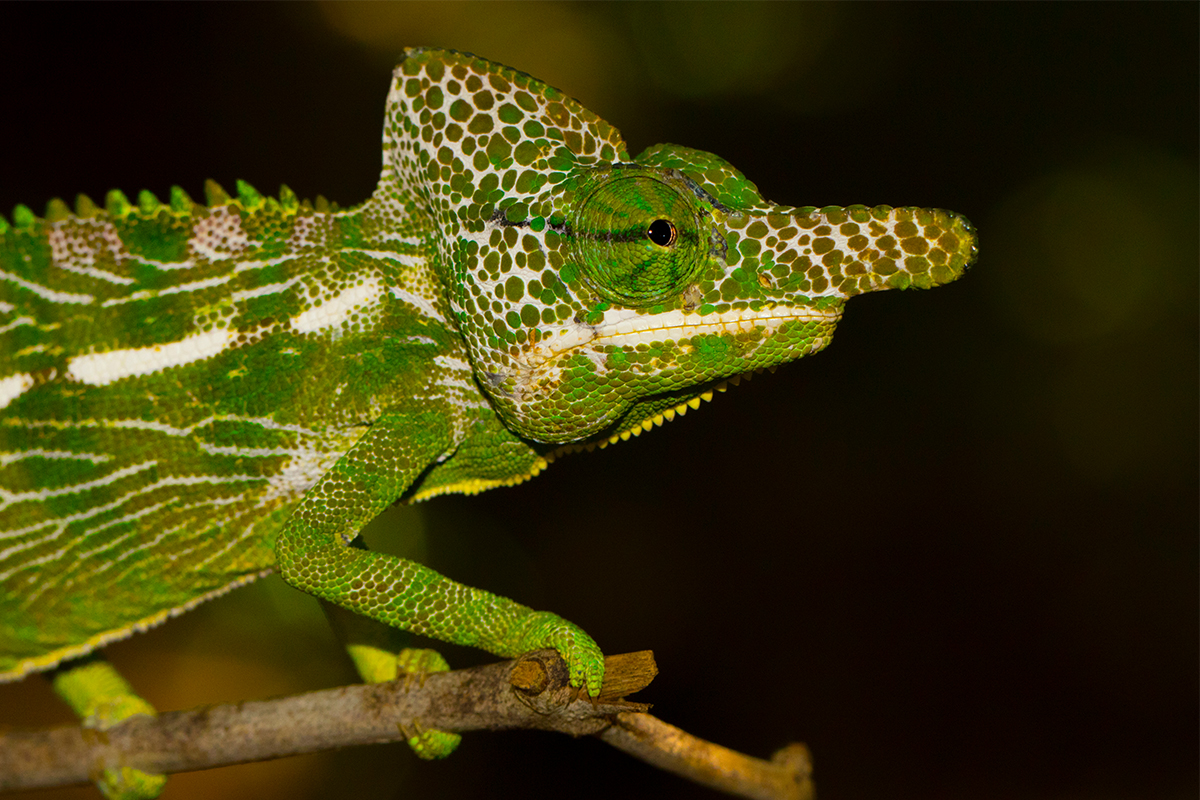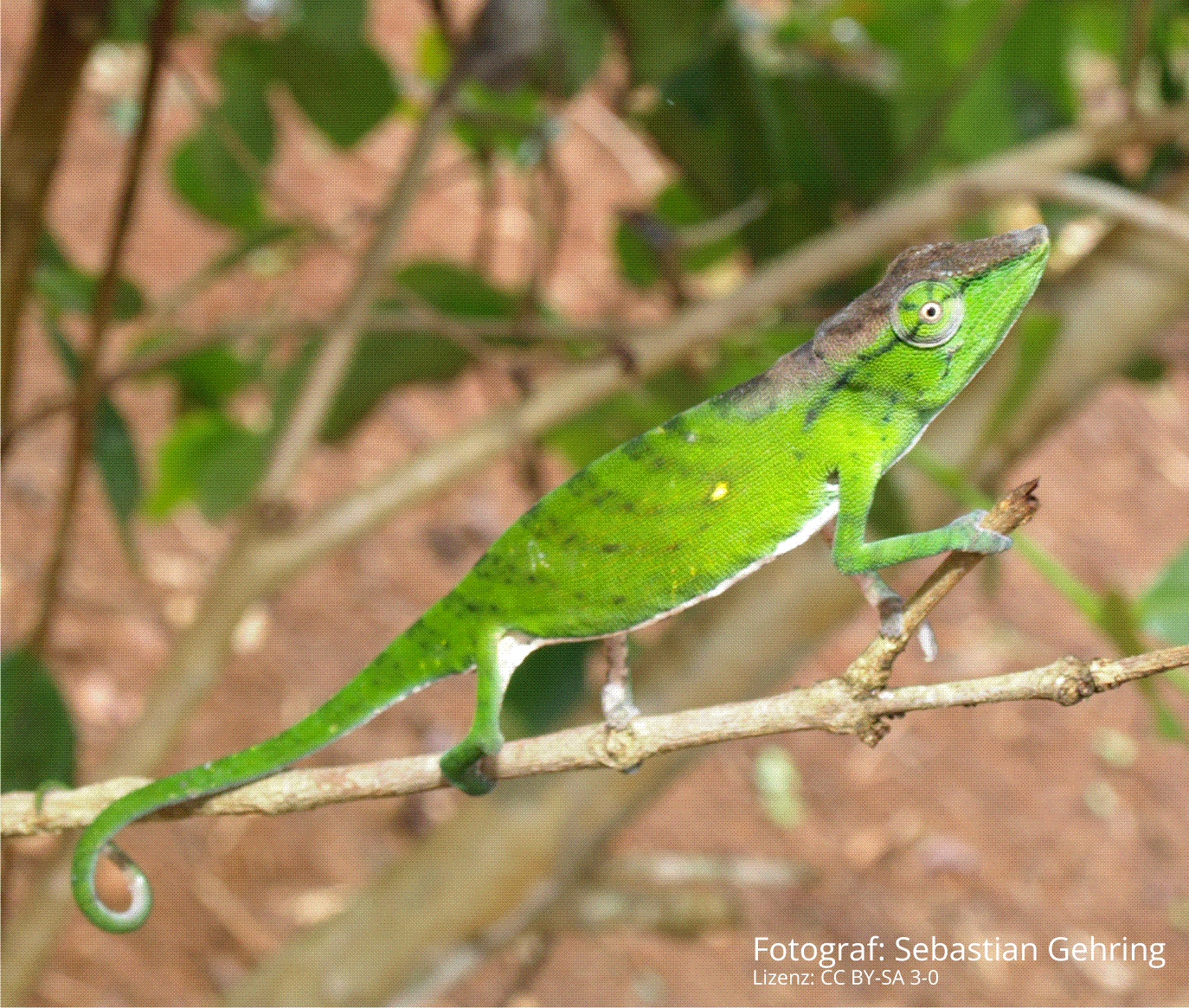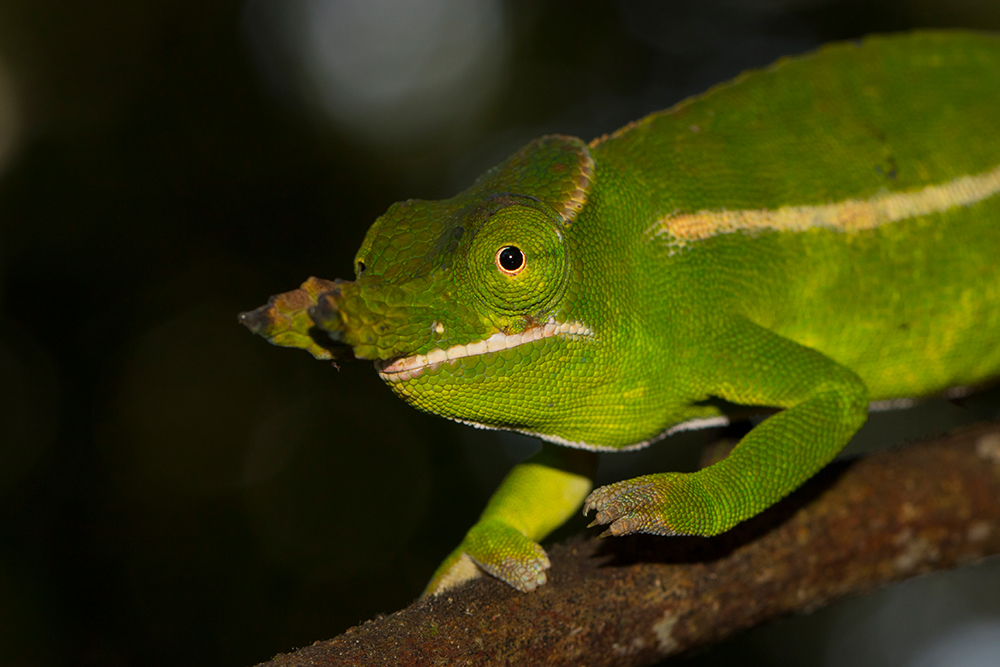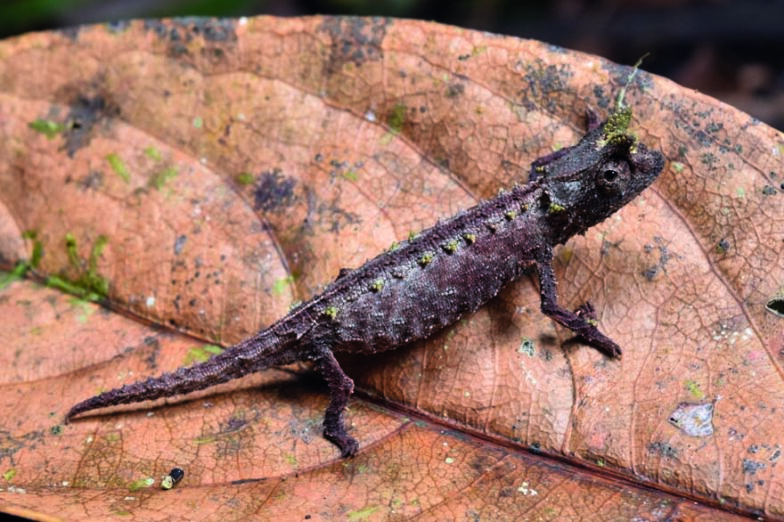After we already discussed a preprint on the habitat of the Labordes chameleon (Furcifer labordi) in Andranomena, Madagascar, last year, the final publication now followed after a long peer review. In fact, the focus of the paper was reconsidered and adapted.
Labordes chameleon (Furcifer labordi) has been known for several years as the world’s shortest-lived chameleon. Five scientists from Madagascar have recently investigated which factors influence the distribution and population size of the species. The study was carried out in the Andranomena Special Reserve, which is located around 30 kilometres north of the coastal town of Morondava in western Madagascar. The special reserve has various habitats used by the chameleons, such as intact dry forest with parts near and far from water as well as regrowing / heavily modified forest.
Distance sampling was used to estimate the population density of Furcifer labordi. For this purpose, each part of the forest was divided into three 50 metre transects over a width of 150 metres. At night, the chameleons were then searched for with a torch, their location measured and the animals themselves marked in colour with nail varnish. Faecal samples were collected and analysed. The following day, a 5 x 5 metre plot was marked around each site and at least 5 metres away along the transect line. In all plots, the degree of canopy cover in per cent, the thickness of the foliage layer on the ground and ground-covering plants in centimetres, the number of shrubs up to 1 m, the number of trees over 1 m and the number of felled and burnt trees were counted. Five days after the first count, chameleons were again searched for and counted at night. In addition, insects were counted and identified using light traps. Along a 1400 metre transect, observations of six species of birds of prey and four species of snakes were also counted as examples. Unfortunately, the exact species are no longer named.
Statistical analyses showed that more Furcifer labordi were found in forest sections where the canopy was denser, the foliage layer on the ground was thicker and there were more trees overall. In the parts of the forest where no chameleons were found at all, significantly more felled trees were counted. The predators observed or their presence did not appear to have any influence on the population density of the chameleons. Surprisingly, the suspected feeders present, mostly insects, also showed no effect on the distribution of the chameleon population. The height of the branches on which Furcifer labordi were found varied greatly over the observation period. However, no correlation was found between age and sex. Preferences in the choice of plants used could not be observed in the chameleons. Furthermore, the different age groups showed no clear preference in their choice of microhabitat.
The authors conclude that the declining population size is primarily due to habitat loss. Habitat loss in Andanomena is almost exclusively of human origin (deforestation for agriculture and cattle grazing, slash-and-burn).
Analyses spatiales de population de Furcifer labordi (Grandidier, 1972) dans la Réserve Spéciale d’Andranomena, Morondava-Madagascar
Philibertin Honoré Djadagna Ahy Nirindrainiarivony, Achille Philippe Raselimanana, Lily-Arison René de Roland, Willy Nathoo Veriza, Daudet Andriafidison
European Scientific Journal 20 (15), 2024,
DOI: 10.19044/esj.2024.v20n15p48
Informations about the preprint













